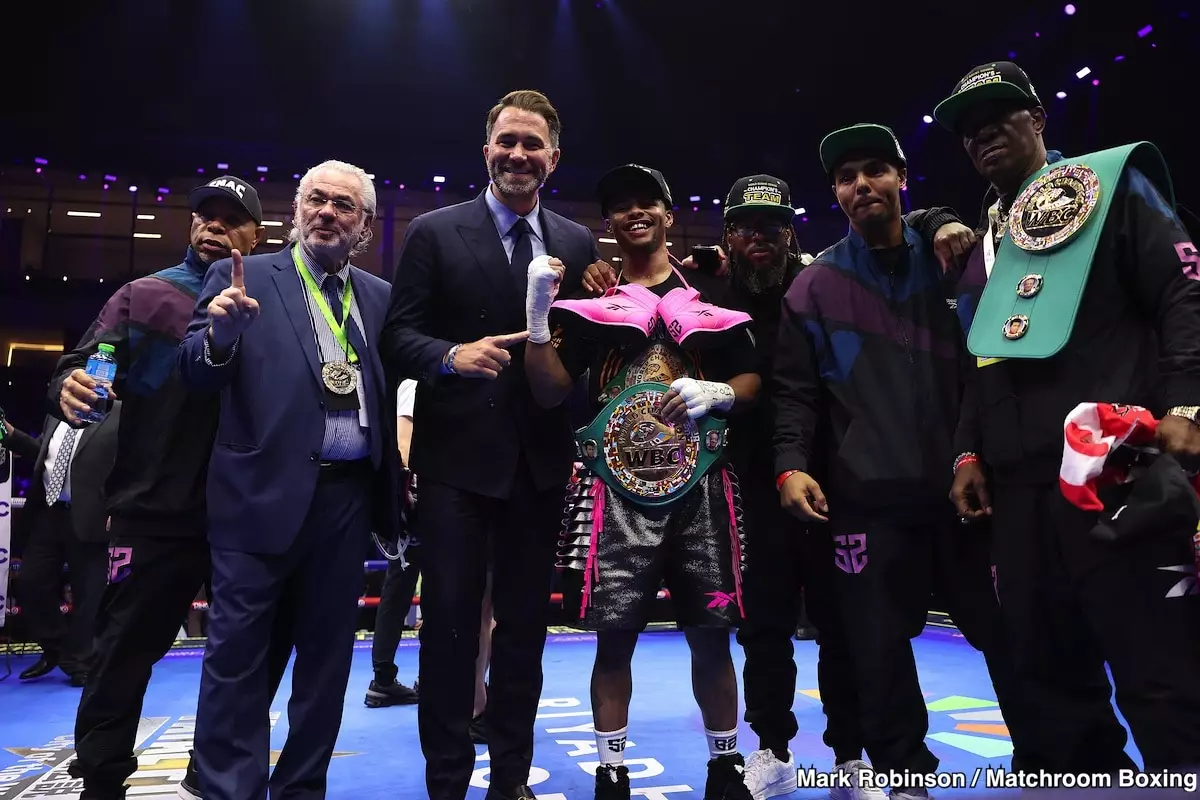In a sport as volatile as boxing, the stakes often extend beyond the ring and into the intricate web of promotional loyalties and business decisions. Recently, Eddie Hearn, a prominent boxing promoter, has found himself at the center of such a storm, regarding Shakur Stevenson’s upcoming fight against William Zepeda on July 12th. Amid swirling rumors of Stevenson potentially ditching Matchroom, Hearn’s reassurances to promoter Lou DiBella reflect a world where loyalty is fleeting, alliances are tenuous, and a fighter’s worth can shift dramatically overnight.
The crux of Hearn’s situation revolves around a “two-fight deal” signed with Stevenson, which should ideally grant both parties a respectable sense of stability. However, Hearn’s interaction with DiBella highlighted a growing uncertainty: while he reminded DiBella of their contractual agreement, it seemed the ground was already shifting underfoot. The world of boxing promotion is notorious for its cutthroat nature, and Hearn’s comments reveal a duality in his feelings towards Stevenson. While he appears eager to maintain a relationship with an unbeaten fighter, there’s an underlying fear of what a loss could mean for his promotional brand.
The Perils of High Expectations
Stevenson’s upcoming bout is pivotal not just for his career trajectory, but also for the clout and reputation of Matchroom. Hearn openly admits that a strong performance could generate interest from multiple promoters, amplifying Stevenson’s market value. On the flip side, a lackluster showing could see a drastic reevaluation of Stevenson’s worth, possibly leading to regret on Hearn’s part regarding his attachment to the young boxer. Hearn’s comments about the necessity for “soft matchmaking” if Stevenson were to falter speak volumes about the harsh realities of promoting a fighter who lacks knockout power and is prone to defensive, sometimes uneventful, fighting styles.
The notion that Stevenson might have to face lesser opponents to rebuild his reputation reveals the concern among promoters about a fighter’s stock plummeting after a defeat. The boxing industry operates on the relentless cycle of wins and losses, where a fighter’s performance is scrutinized not only by fans but also by the figures holding the purse strings. This precarious situation seems to lurk in the background of every negotiation, compelling promoters to rethink their strategies when a fighter’s star begins to dim.
Social Media: A Double-Edged Sword
In the modern era of boxing, the role of social media cannot be understated. Hearn referenced the sensitivity of boxers to online criticism, showcasing the psychological pressures exerted by a hyper-connected audience. He candidly addressed how negative feedback can impact a fighter’s mental state, potentially influencing their performance in the ring. This commentary raises important questions: Are promoters exacerbating a fighter’s mental burdens by engaging with the hostile environment of social media? Or are they merely offering a reflection of the public’s sentiment, which is often harsh and unforgiving?
Furthermore, Hearn’s frustrations about social media’s impact on Stevenson paint a broader picture of the changing landscape in boxing. Instead of merely focusing on their athletic prowess, fighters now must also navigate their public personas. This brand-building can be both beneficial and detrimental. Hearn’s remarks suggest a concern not just for Stevenson’s next bout but for the way public perception could mold his future opportunities. In a sport where image is everything, a fighter’s mental health can often be overshadowed by the relentless pursuit of glory and recognition.
The Future of Shakur Stevenson: Navigating Crossroads
As Shakur Stevenson approaches a potential crossroad in his career, the convergence of talent, promotional strategies, and psychological perseverance will be tested like never before. The upcoming bout against Zepeda will serve as a litmus test, not only for Stevenson’s status in the boxing scene but also for Hearn’s capacity to maintain a promising prospect under increasingly unstable circumstances.
Hearn’s forthcoming meeting with Stevenson and his team exemplifies the urgency of the situation. The essence of their conversation could dictate the trajectory of Stevenson’s career and illustrate the delicate balance of power between a fighter, their promoters, and the ever-evolving market of boxing. As the buzz intensifies around the upcoming fight, fans and analysts alike are left to ponder just how much is truly at stake—not just for Stevenson’s record, but for his entire future within the sport. In the end, the outcomes may reshape the dynamics of boxing promotion as we know it, for better or worse.

